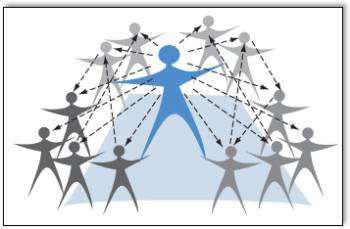
A*STAR researchers are extracting useful information from billions of social media posts to support businesses, governments and healthcare professionals
In the second it takes to ‘like’ this article, 6,000 tweets, 5,000 profile updates, 4,000 photos and 500 blogs will have been posted on multiple social media platforms. As that second extends to a minute, a day and even a year, more than 2 billion people around the world will have checked in and out of their virtual networks hundreds and thousands of times. Researchers at A*STAR are putting this wealth of ‘breaking news’ about what people are thinking, feeling and doing to good use, whether to visualize the spread of the avian influenza virus in virtual space, or to gain new insights into human psychology for better marketing.
“Our work is geared toward studying people-centric issues and human behavior, and translating this knowledge into social technologies that can be deployed in solving real-world problems,” explains Quek Boon Kiat from the Social and Cognitive Computing Department at the A*STAR Institute for High Performance Computing (IHPC). The department combines rigorous psychological studies, computational virtuosity and reams of publically available data to serve the needs of business, government and health. “Whatever smart or superior technologies we develop should ultimately be used by people in an organization or in a social setting,” adds Yinping Yang, also at the IHPC.
Network-based models
Quek first realized the importance of psychology in designing robotics and computer systems during his PhD. His research involved building behavioral control systems that would enable robots and unmanned vehicles to survive on their own in remote and harsh environments. “It was necessary to look more deeply into human psychology and cognition to find clues, and in this case, design principles, that could guide the development and construction of artificially intelligent systems,” he recalls.
Now head of the Integrative Psychological Modelling team at the IHPC, Quek not only develops artificial systems inspired by human cognition, but also uses computational techniques such as network-based models to study human psychology. Network-based models consist of ‘nodes’ — defined in psychological terms as personality traits, values, beliefs, interests, temperaments and behaviors — and ‘links’ connecting them. Researchers in Quek’s team collect information about the relationship between these psychological constructs from relevant peer-reviewed papers. “These relationships are then integrated to create the models on which our algorithms can operate,” explains Quek.
The psychological insights gained from these models could be used to assess the suitability of job applicants, to match volunteers with appropriate tasks and to customize curricula to individual learners, in addition to many other potential applications in finance, consumer profiling and market segmentation, education, and human capital management.
Social contagion
Information in linked social groups can sometimes spread like infectious diseases. Quek’s group also develops advanced algorithms to characterize and measure such crowd-level behavior and social contagion, which could serve as early indicators for their reemergence.
When the Avian influenza strain H7N9 swept through Asia in 2013, for example, signs of outbreaks rippled across social media long before information was released by official channels. Quek’s team collaborated with Yang’s Social Intelligence Team, and Singapore’s Ministry of Health to examine social network activity during that period. They wanted to develop a system that could provide policy makers with timely information about the outbreak and spread of disease and public panic.
They focused on the specific case of China, collecting information released and disseminated on China’s most popular social network, Weibo, during the month of April 2013. Among other findings, they discovered that Weibo provided significantly more timely information about the virus’s spread than other traditional information channels, including leading news agencies and the World Health Organization. Their analysis provided an empirical basis for implementing a social-media-enabled surveillance and analysis platform for public health officers to track global disease outbreak, analyze the risks and enhance policy decision-making.
Yang’s team took the analysis further to assess changes in public sentiment.
Read more: Making good use of social media
The Latest on: Social media
[google_news title=”” keyword=”Social media” num_posts=”10″ blurb_length=”0″ show_thumb=”left”]
via Google News
The Latest on: Social media
- UK Demands Tougher Age Checks By Social Media Firmson May 8, 2024 at 12:55 am
Pleasing almost nobody, the U.K.'s media regulator has warned that social media companies must stop their algorithms recommending harmful content to children, and put
- Blinken Blames Social Media For Israel’s Lost Narrative on War in Gazaon May 7, 2024 at 8:16 am
Secretary of State Antony Blinken said social media dominated the narrative around Israel’s war in Gaza on Friday, sitting for an interview with Senator Mitt Romney at the McCain Institute’s 2024 Sedona Forum.
via Bing News










